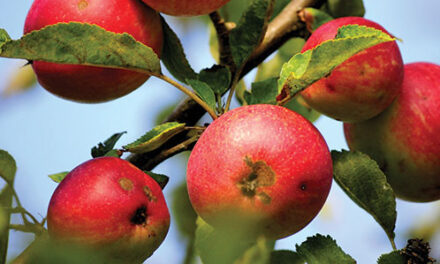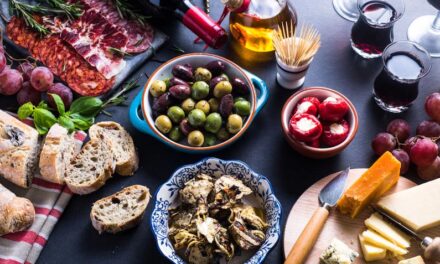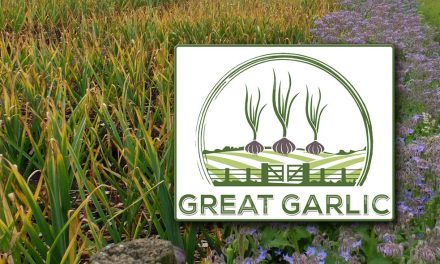The term “Superfood” was first used in the 1990s when a cookbook that was co-written by Dr. Michael Van Straten, a practitioner of alternative medicine, appeared in the bookshops. It was titled Superfoods and it claimed to provide the reader with information regarding various nutrients to help the body improve resistance against diseases and stress. Since that time, “superfoods” is primarily associated with fruits, vegetables and any other food products that are considered to be healthy for the body.
As time progressed, however, nutritious Mother Nature made foods that once held the superfood distinction, were overthrown by exotic foods, as if they were the only ones now worthy of the superfoods monarchy. In fact, the superfoods term has been used so frequently by food and product promoters over the past decade, the public now believes that these exotic foods have near-magical qualities to compensate for their high prices.
Whenever a scientific study provides evidence regarding a positive effect of some chemical property or properties found in a so-called superfood, that superfoods promotional influence is instantly boosted and more companies can jump on the superfood bandwagon.
This is yet another reason why food promoters are constantly searching for yet undiscovered sources of remarkable nutrients. The public is continuously bombarded with new food products that allegedly can provide all sorts of healthy benefits to the body single-handedly. Over the years, the term “superfood” has retained its appeal to the public but it is now used mainly to create hype about a product to make it more marketable. With all the marketing gimmicks aside, what really constitutes a superfood?
Up until now, there is no scientifically accepted definition of “superfood.” As mentioned, the term is generally used to refer to foods that are jam-packed with nutrients and can provide health benefits to your body1 Contrary to the marketing claims, there is no food product—no matter how exotic—that can single-handedly provide all of your health needs. Limiting yourself to eating these so-called superfoods can actually result in an impaired, one-sided diet that can do you more harm than good.
Vitamins and minerals usually work in synergy and thereby need to work with one another in order to be able to provide what the body needs. This is a fact that is usually overlooked by people in their desire to get a one-way ticket to good health. Superfoods also work in synergy, and therefore—in more cases than not—it is wise to consume them as a package, or the whole food.
Food scientists can easily isolate one or two components of a superfood, and even though those components might look good based on a study or two, nature doesn’t work in isolation. This is why you don’t find a single isolated tocopherol (an isomer of vitamin E) in a food like almonds, but instead an array of mixed tocopherols, all of which work in synergy. Research has even shown that when we consume only one form of vitamin E (alpha tocopherol), it is at the detriment of the other forms, which potentially harms the body.2
Berry, Berry Good
The members of the berry kingdom are great examples of superfoods. These edible, fleshy and colorful fruits are full of antioxidants that can actually help in reversing and preventing diseases that are associated with free radicals.3 Free radicals are unstable molecules that react with various body chemicals, causing irreversible damage to our cells.4 As a person grows older, the damage caused by free radicals often worsens, which may speed up the process of aging and contribute to age-related health concerns. Antioxidants can help prevent premature aging by quenching the destructive action of free radicals.5 Berries, especially those with dark color, have one of the highest concentrations of antioxidants—flavonoids and anthocyanidins—found in nature.6
Anthocyanidins play an important role in memory function and can help decrease the rate of a person’s mental decline. Actually, a study was able to show that age-related cognitive decline reduced by about 1.5 to 2.5 years just by eating berries at least once a week.7 In addition, the same antioxidant can also fight the development of macular degeneration, an eye disorder usually brought about by old age.8
The risk of cancer and heart diseases, on the other hand, can be reduced by various flavonoids, especially quercetin.9 The immune system already has its own troop of cancer-fighting cells, but a study has shown that quercetin can greatly increase the number of anti-cancer cells in the body.10 It also can regulate cholesterol and blood pressure levels, which are two primary factors for heart disease.11
Vitamin K
However, berries are not the only sources of nutrients that can fight heart disease. Green leafy vegetables are a great source of Vitamin K, which can also decrease the risk of cardiovascular diseases. Unbeknownst to many, vitamin K works hand in hand with Vitamin D. Osteocalcin, a protein hormone present in Vitamin K, binds Vitamin D into your bones thus promoting bone health and prevents it from being deposited in your blood vessels.12 Thus, protecting your blood vessels from being clogged and decreasing the risk of heart disease.
Nature is full of colors. More than just aesthetics, the different colors of natural products can actually give you a clue to the nutrient levels in them. Although some fruits or vegetables may have more nutrients than others, this does not mean that they are the only ones that provide the nutrients that you need. The next time that you eat, make sure that you have a colorful plate in front of you. This is your true and surefire ticket to good health.
References
- What is a Superfood, Anyway? Retrieved from Cleveland Clinic Healthessentials.
- Chen H, et al. Mixed tocopherol preparation is superior to alpha-tocopherol alone against hypoxia-reoxygenation injury. Biochem Biophys Res Commun. 2002 Feb 22;291(2):349-53.
- Paredes-López O, et al. Berries: improving human health and healthy aging, and promoting quality life. Plant Foods Hum Nutr. 2010 Sep;65(3):299–308. doi: 10.1007/s11130-010-0177-1.
- What is Oxidative Stress. WebMD. (n.d.)
- V. Lobo, A. Patil, A. Phatak, and N. Chandra Free radicals, antioxidants and functional foods: Impact on human health. Pharmacogn Rev. 2010 Jul-Dec; 4(8): 118–126.
- Darla Leal. 10 Superfoods to Eat Daily for Optimal Health. Retrieved from verywellfit
- Park, Alice. (2012, April 26). Brain Food: Berries Can Slow Cognitive Decline. Time
- Wang JJ, et al. Genetic susceptibility, dietary antioxidants, and long-term incidence of age-related macular degeneration in two populations. Ophthalmology. 2014 Mar;121(3):667–75.
- Knekt P, et al. Flavonoid intake and risk of chronic disease. Am J Clin Nutr. 2002 Sep;76(3):560–8.
- Brito AF, et al. Quercetin in cancer treatment, alone or in combination with conventional therapeutics? Curr Med Chem. 2015 Aug 12.
- Dower JI, et al. Effects of the pure flavonoids epicatechin and quercetin on vascular function and cardio-metabolic health: a randomized, double-blind, placebo-controlled, crossover trial. Am J Clin Nutr. 2015 May;101(5):914-21. doi: 10.3945/ajcn.114.098590. Epub 2015 Feb 25.
- Xiaotong Kuang 1, Chunxiao Liu 1, Xiaofei Guo 1, Kelei Li 1, Qingxue Deng 1, Duo Li 1 The combination effect of vitamin K and vitamin D on human bone quality: a meta-analysis of randomized controlled trials. Food Funct. 2020 Apr 30;11(4):3280-3297. doi: 10.1039/c9fo03063h.











